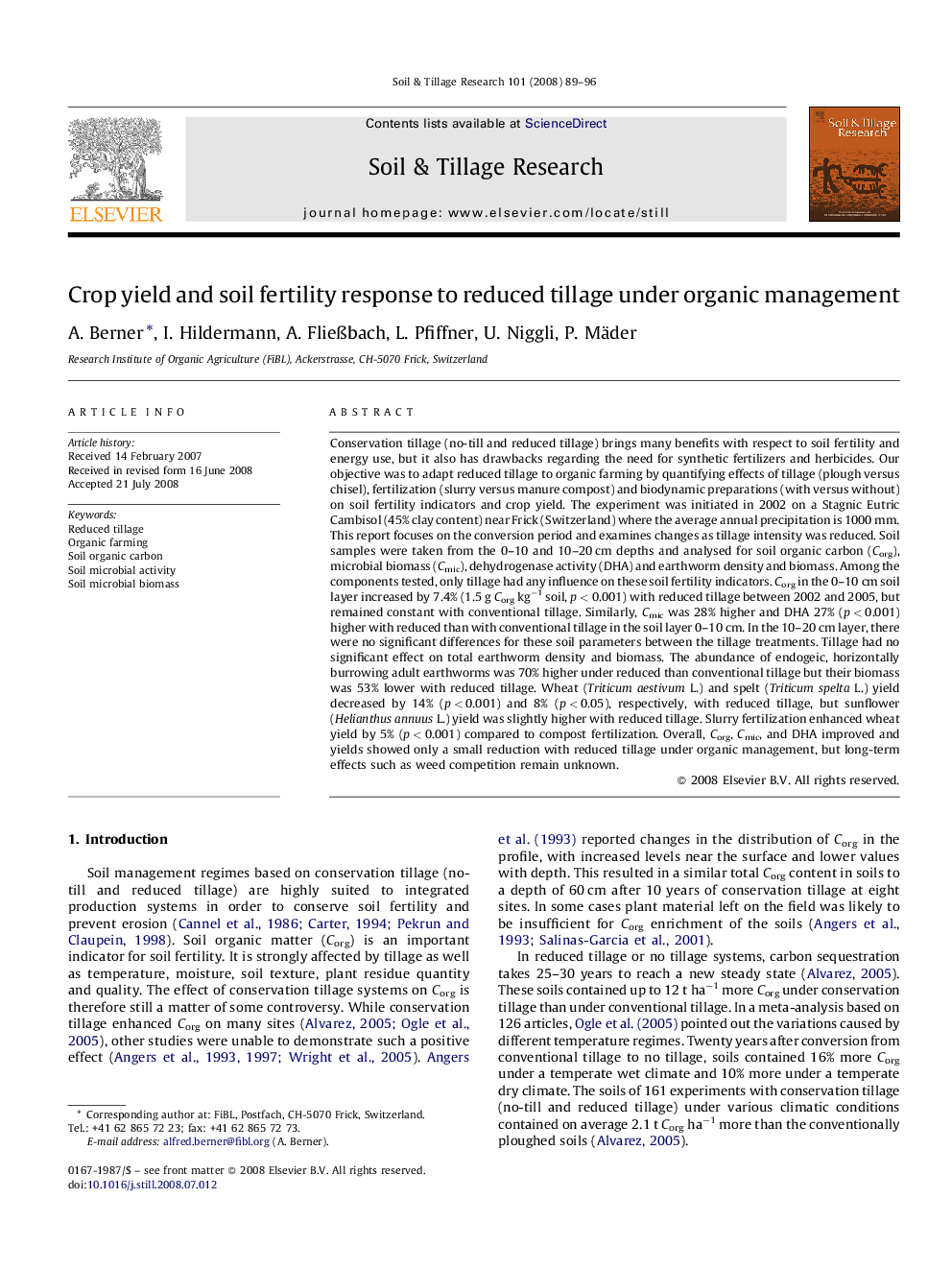| کد مقاله | کد نشریه | سال انتشار | مقاله انگلیسی | نسخه تمام متن |
|---|---|---|---|---|
| 306498 | 513098 | 2008 | 8 صفحه PDF | دانلود رایگان |

Conservation tillage (no-till and reduced tillage) brings many benefits with respect to soil fertility and energy use, but it also has drawbacks regarding the need for synthetic fertilizers and herbicides. Our objective was to adapt reduced tillage to organic farming by quantifying effects of tillage (plough versus chisel), fertilization (slurry versus manure compost) and biodynamic preparations (with versus without) on soil fertility indicators and crop yield. The experiment was initiated in 2002 on a Stagnic Eutric Cambisol (45% clay content) near Frick (Switzerland) where the average annual precipitation is 1000 mm. This report focuses on the conversion period and examines changes as tillage intensity was reduced. Soil samples were taken from the 0–10 and 10–20 cm depths and analysed for soil organic carbon (Corg), microbial biomass (Cmic), dehydrogenase activity (DHA) and earthworm density and biomass. Among the components tested, only tillage had any influence on these soil fertility indicators. Corg in the 0–10 cm soil layer increased by 7.4% (1.5 g Corg kg−1 soil, p < 0.001) with reduced tillage between 2002 and 2005, but remained constant with conventional tillage. Similarly, Cmic was 28% higher and DHA 27% (p < 0.001) higher with reduced than with conventional tillage in the soil layer 0–10 cm. In the 10–20 cm layer, there were no significant differences for these soil parameters between the tillage treatments. Tillage had no significant effect on total earthworm density and biomass. The abundance of endogeic, horizontally burrowing adult earthworms was 70% higher under reduced than conventional tillage but their biomass was 53% lower with reduced tillage. Wheat (Triticum aestivum L.) and spelt (Triticum spelta L.) yield decreased by 14% (p < 0.001) and 8% (p < 0.05), respectively, with reduced tillage, but sunflower (Helianthus annuus L.) yield was slightly higher with reduced tillage. Slurry fertilization enhanced wheat yield by 5% (p < 0.001) compared to compost fertilization. Overall, Corg, Cmic, and DHA improved and yields showed only a small reduction with reduced tillage under organic management, but long-term effects such as weed competition remain unknown.
Journal: Soil and Tillage Research - Volume 101, Issues 1–2, September–October 2008, Pages 89–96